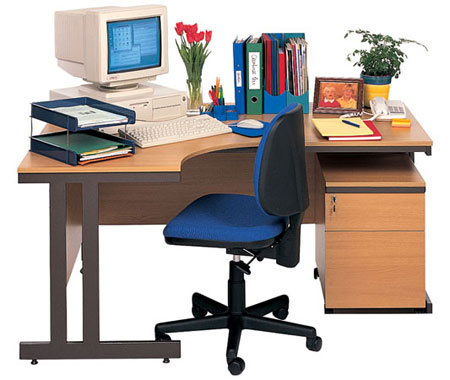Start with your own desk to reduce stress in the workplace. Mess just
makes for stress. Do not fool yourself that an untidy desk is acceptable
because you know where things are. Do not rely on new technology and the
“paperless office” to rescue you.
Clearing out debris
Some people have a fear of
throwing things away and of discovering that they have just disposed of
the very thing they need. They therefore hoard
every useless or out-of-date note. In most jobs, however, you
can safely follow the “three-month rule”. Anything that has remained
unread on your
desk for three months is due for a move on to another
destination – either to a file for long-term storage, or into the
wastepaper basket. If you
have not tidied your desk or done your filing for a long time,
you need to be
ruthless. Sort papers and notes into three distinct piles:
Discarding waste
It is less stressful to have an empty desk and a full wastepaper
basket than the reverse. Putting unwanted paper in the bin can bring a real
sense of achievement. Recycle paper if possible.

Action now – work to be completed today;
Action later – put the paper in your pending tray and
complete the work within a week;
No action – file it or throw it away.
Points to remember
Papers, files, and books are best stored on shelves and not your
desk, leaving more work space.
Old newspapers should be thrown away – news becomes stale
fast.
Large pieces of paper are best for writing notes. Scraps get
lost.
Records of phone calls are useless if you cannot remember when
they occurred, so date notes.
Getting organized
Equip your desk with an in-tray, pending tray, filing tray, and
out-tray – use a stacking system to save space. Make sure you sort
through your pending tray and empty it once a week. Arrange your desk so that
those things you use most often are most accessible. Position your computer so
you do not have to twist around to use it. The monitor should be directly in
front of you.
Improving surroundings
Stress is affected by other visual stimuli, such as the colour of
our surroundings. Companies use colour to create moods – in shops,
reception areas, and so on. Do the same for the space around your desk. The
colour you select will depend on whether you prefer to be soothed or stimulated
by your surroundings. Choose whichever shade is easiest for you to live and
work with. Add colour to your desk with flowers, plants, and family
photographs.
Enhancing your work space
Make your workspace as aesthetically pleasing as your home. After
all, you probably spend more waking hours there than you do in your home.

TIP
Start each day stress-free by tidying your desk the night
before.
TIP
Keep an executive toy to “play” with during
breaks.
TIP
Try out different room plans before you settle into a new
office.
TIP
When you move to a new work space, spend time thinking how to make
it more pleasant.